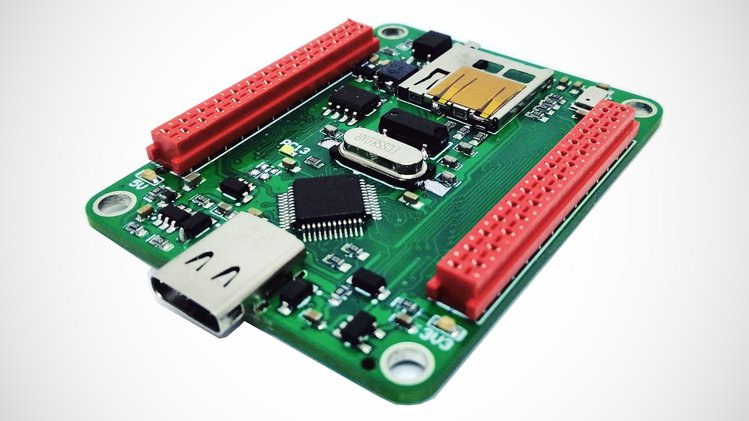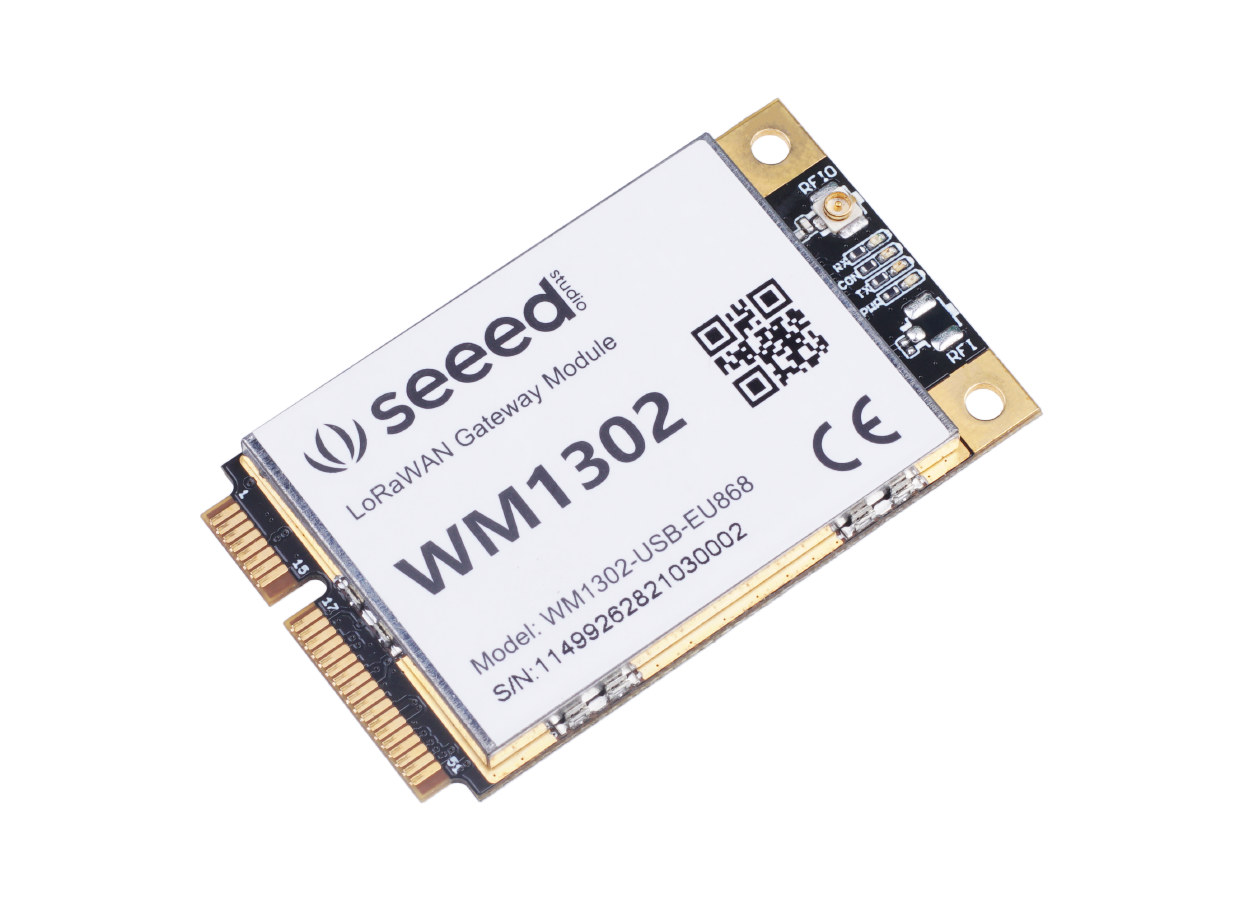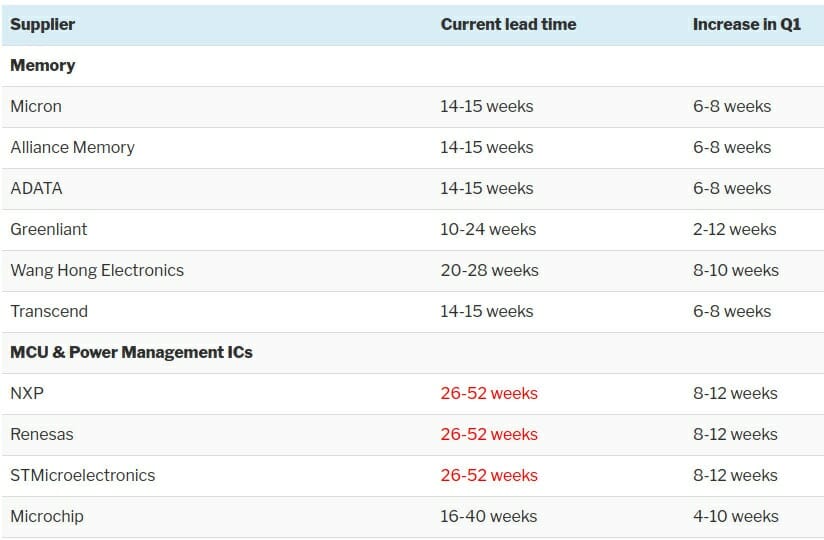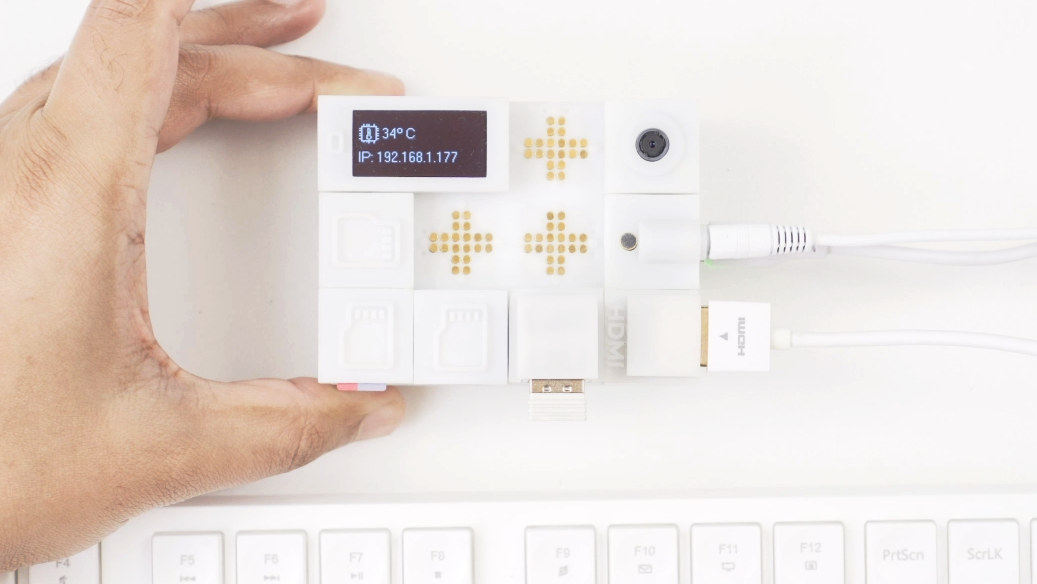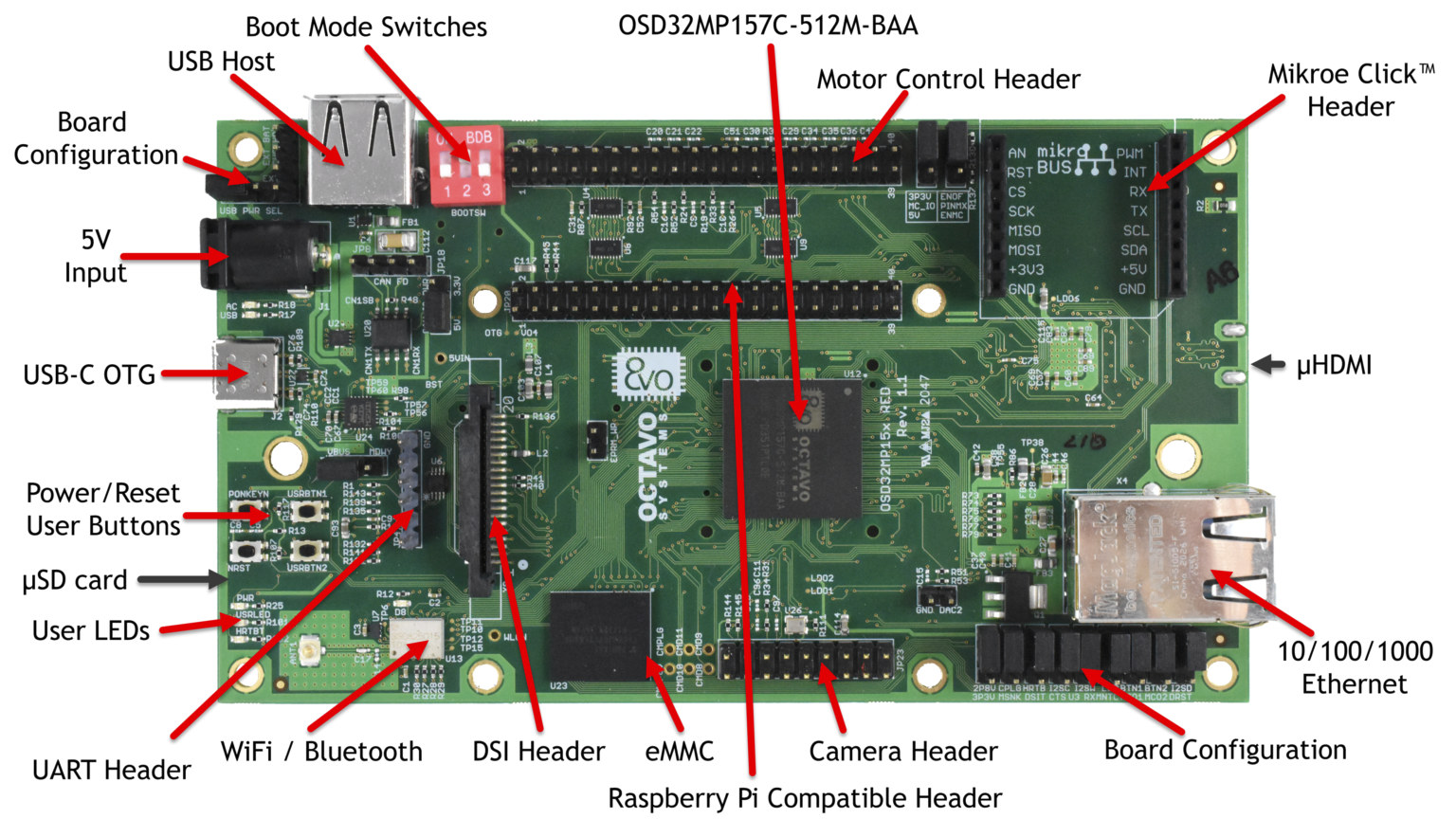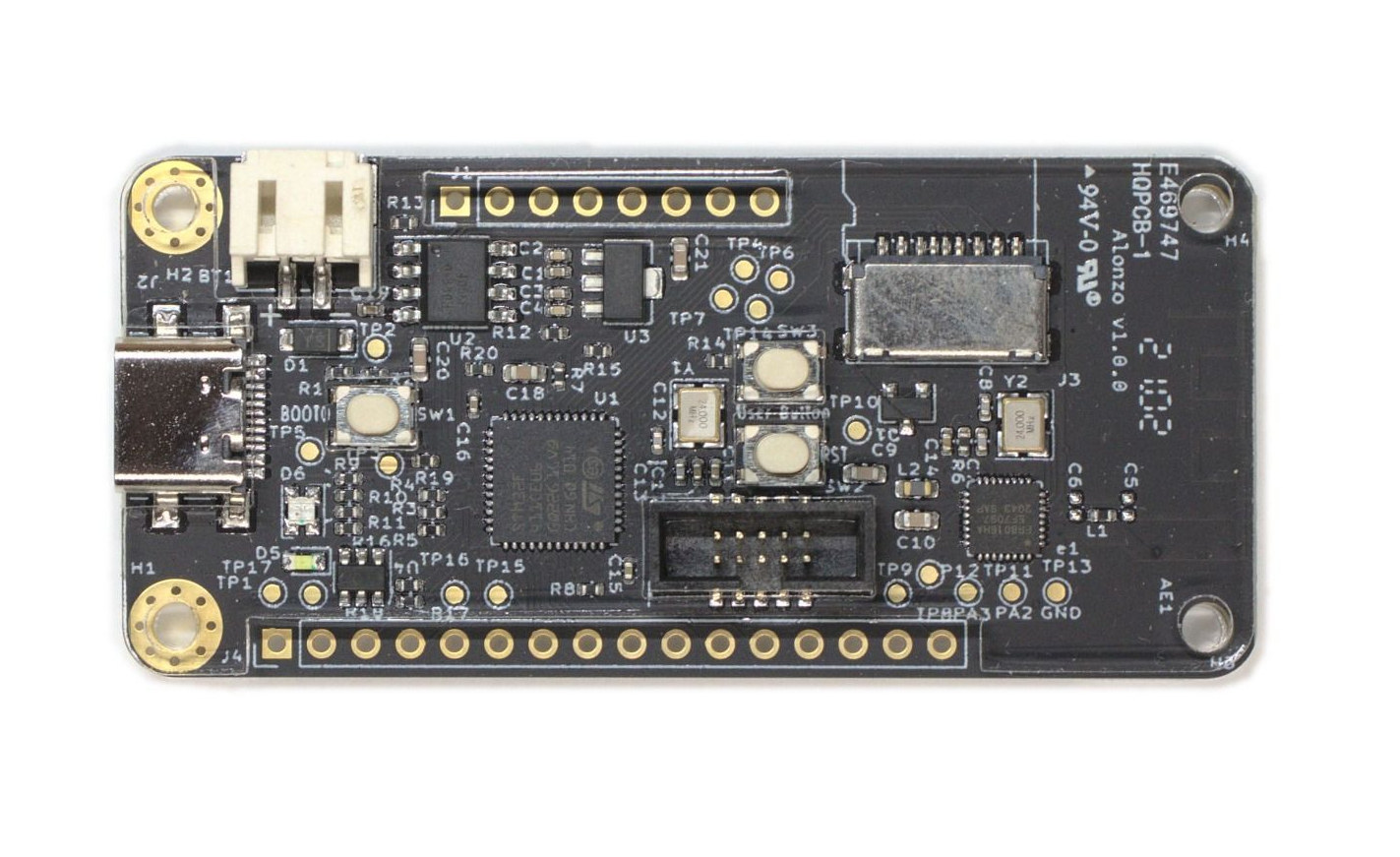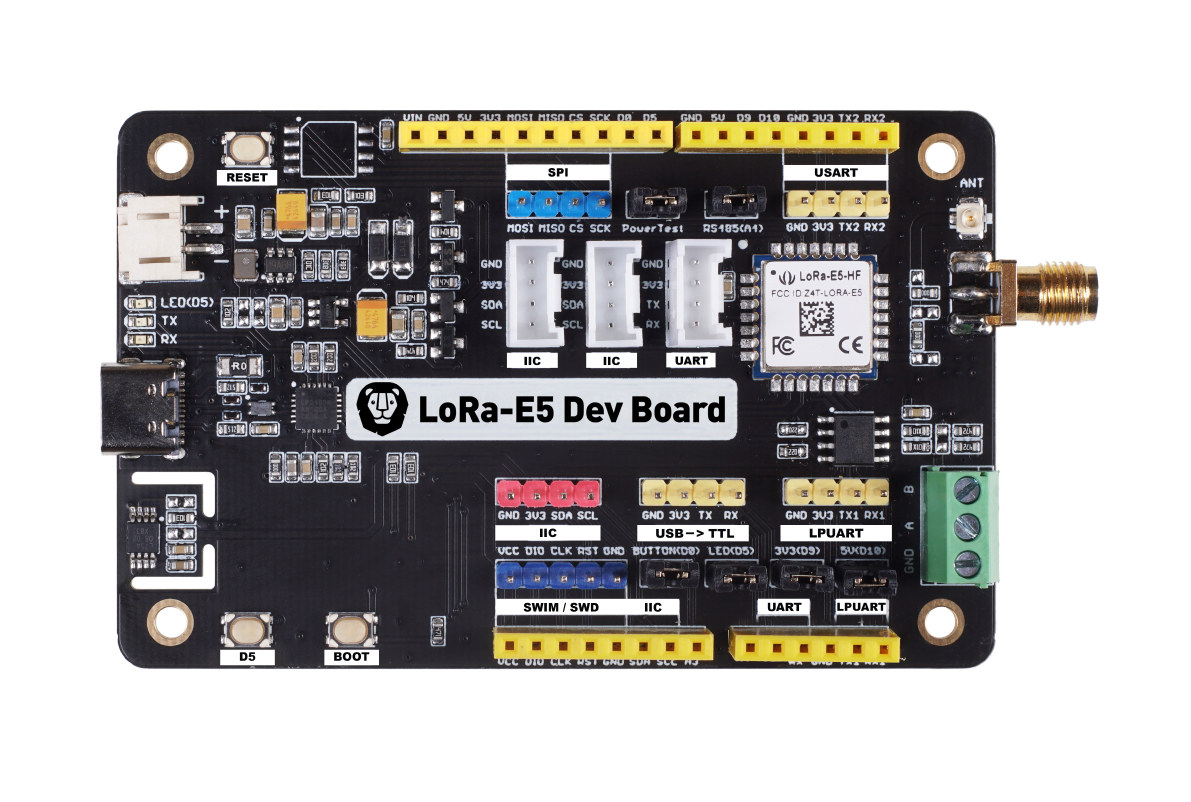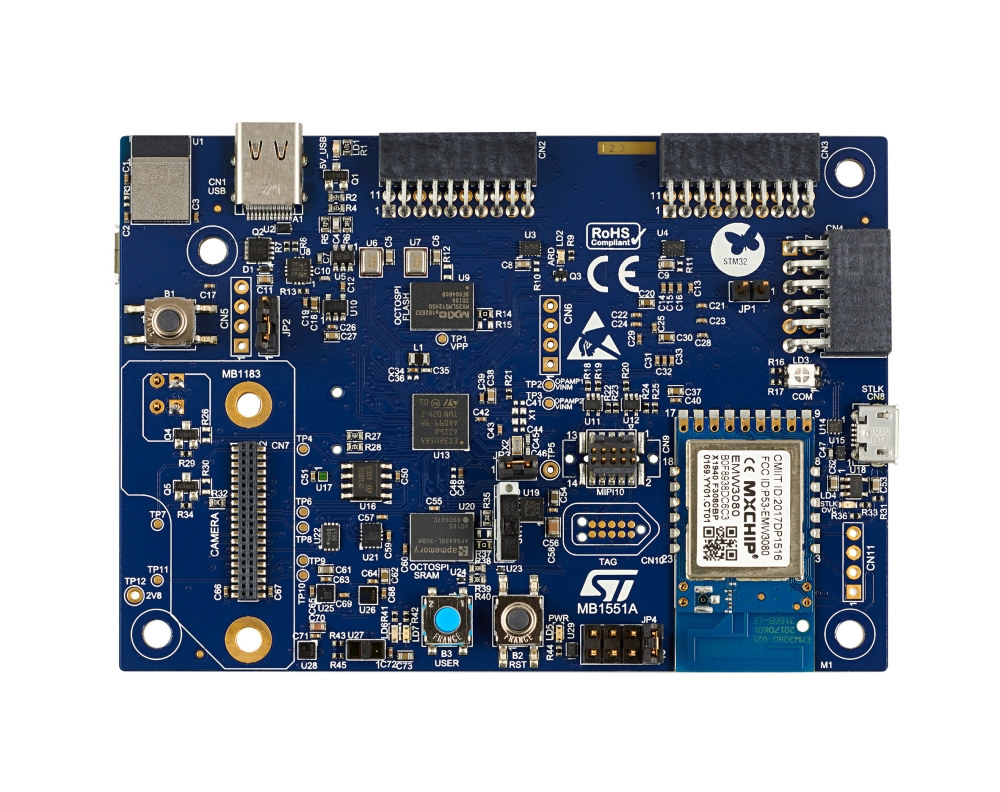If you are looking to connect to a vehicle’s CAN bus, then the newly launched open-source board::mini development tools include a board and expansion boards that will aid your application. BMC labs have introduced a development board based on the STM32 MCU and supporting expansion boards to increase the capabilities of the baseboard via a crowdfunding project. As mentioned earlier, the board:mini base development board features an STM32 MCU at its heart and comes with a CAN transceiver. For those who do not know what a CAN transceiver is, it just transmits and detects data on the CAN bus. The board:mini project also includes three expansion boards designed to fit on top of the base development board. The bmc::board project was born to produce development tools appropriate for both field- and industrial-prototyping work. These boards were not designed to sit on a workbench. We ourselves have a habit of strapping […]
WM1302 LoRaWAN gateway mini PCIe module works over SPI or USB
Announced in 2019, Semtech SX1302 LoRa transceiver is designed for cheaper, and more efficient LoRaWAN gateways, and we’ve seen it in mini PCIe concentrator cards such as nFuse SX1302 and Rak Wireless RAK2287 using USB or SPI host interfaces. Seeed Studio adds another option with WM1302 LoRaWAN gateway mPCIe module using either SPI or USB interfaces and supporting 868 or 915 MHz frequency bands. WM1302 module specifications: MCU – STMicro STM3L412 Arm Cortex-M4 microcontroller @ 80 MHz with 40KB RAM, 64 or 128KB flash LoRa Connectivity Semtech SX1302 LoRa Transceiver with 2x SX1250 Tx/Rx front-ends Tx power – Up to 26dBm @ 3.3V Rx sensitivity – Down to -139dBm @ SF12, BW 125 kHz; -125dBm @ 125K/SF7 LoRaWAN 1.0.2 compatible. LoRa band coverage – EU868, US915, AS923, AS920, AU915, KR920, and IN865. u.FL antenna connector Misc – Power, Config, and Tx/Rx LEDs Host Interface – SPI or USB interface on […]
Semiconductors lead times in March 2021
As we previously mentioned previously there is a serious chip shortage that will lead to supply issues and higher prices for single board computers and other electronics products. A few days ago, Hardkernel had o increase the price for ODROID boards using DDR4 memory with increases of $3 to $4 for ODROID-N2+, ODROID-C4, and ODROID-HC4 boards. But besides price increase, some semiconductors will not be available at any price with extended periods as lead times of up to 52 weeks have been reported as shown in the table below, obtained from a trusted, anonymous source, which I have translated from Chinese. Every manufacturer is impacted, but items highlighted in red are severely impacted. Since include processors from Qualcomm, STMicroelectronics, and NXP, as well as Broadcom wireless chips which are found in nearly every SBC with WiFi or Bluetooth through Ampak modules. Here’s the source image in Chinese for reference. Jean-Luc […]
Pockit modular Linux computer takes hot plugging magnetic blocks
There have been attempts to create modular computers and smartphones to reduce electronics waste and improve user-serviceability over the years with initiatives and products like Google Project Ara, PinePhone and Fairphone3 smartphones, DevTerm mini computer, Olimex TERES-I laptop, and many more. Here’s another modular computer project that looks really cool. Pickit modular computer is comprised of an STM32+ESP32 based mainboard with a socket for an optional Raspberry Pi Compute Module 3. The board includes magnets and electrical contacts to snap and hot-plug modules/blocks while the computer is running. The video demo embedded further below, is really impressive, but let’s check out Pockit preliminary specifications first: MCU – STMicro STM32 microcontroller Wireless MCU – ESP32 dual-core processor with WiFi and Bluetooth LE CPU module – Socket for Raspberry Pi Compute Module 3 Expansion 24+ feature BLOCKS ready to use with instant connection using magnetic-snaps including Ethernet, Display (HDMI), audio, sensor modules […]
OSD32MP1-RED full-featured STM32MP1 development board launched for $265
OSD32MP1-RED development board was first announced last year together with another board based on Octavo Systems OSD32MP1 System-in-Package (SiP). The chip packs an STMicro STM32MP1 Cortex-A7/M4 processor, up to 1GB DDR3L memory, 4KB EEPROM, a PMIC, two low-power MEMS oscillators, over 100 passive components into a single 18x18mm 302 Ball BGA package. The company has now just announced the availability of the OSD32MP1-RED development platform on DigiKey, Arrow, and Mouser for around $265 and up. There have been a few modifications to the design with, for instance, the USB header replaced by a USB Type-A connector, but the most notable difference is that OSD32MP1-RED is now using a green PCB instead of the red one showed during the first announcement… OSD32MP1-RED specifications: SiP – Octavo Systems OSD32MP157C-512M-BAA with STM32MP157C SoC with dual-core Arm Cortex-A7, Cortex-M4 real-time core, plus 512MB DDR3 memory, STPMIC1A power management chip, EEPROM, oscillator, and passive components […]
Use Scheme functional programming language with LambdaChip Alonzo STM32 board
Most MCU-based embedded systems come with firmware programmed with assembler, C, and/or C++. But as referenced in a paper published in 2000 entitled ” Point of view: Lisp as an alternative to Java“, functional programming languages like Lisp or Scheme may lead to shorter development times compared to C/C++ or Java. That’s with this idea in mind that LambdaChip was created. It is a lightweight, open-source virtual machine designed to run on embedded systems with limited resources, for instance, an 80MHz microcontroller with 50KB RAM, and programmable with Scheme multi-paradigm programming language, a dialect of Lisp widely used for functional programming research and teaching. The company behind the project, also called LambdaChip, has just created its own hardware with LambdaChip Alonzo, an STM32 Cortex-M4 development board with 512KB flash, 128KB RAM, and that also comes with Bluetooth LE connectivity. LambdaChip Alonzo board specifications: MCU – STMicro STM32F411CEU6 Arm Cortex-M4 MCU […]
STM32WL based LoRa-5E development kits go for $19.90 and up
The LoRa-E5 STM32WL module we covered last month can now be found in two LoRaWAN development kits from Seeed Studio with the ultra-compact LoRa-E5 mini board, and the Arduino UNO shaped LoRa-E5 board with more I/Os. Both boards support the LoRaWAN protocol with global frequencies and can achieve a transmission range of up to 10 km with ultra-low power consumption. LoRa-E5 and LoRa-E5 mini specifications: LoRa connectivity LoRa-E5 modules based on STM32WLE5JC SoC with Arm Cortex-M4 MCU @ 48 MHz with 256 KB flash memory, 64 KB SRAM, SX126x LoRa radio Modulations – LoRa, (G)FSK, (G)MSK, BPSK Operating frequencies – 868/915MHz (EU868, US915, AU915, AS923, KR920, IN865) Output power – up to +20.8 dBm at 3.3V Rx sensitivity – -116.5 dBm to -136 dBm Protocol – LoRaWAN SMA-K and IPEX antenna connectors USB – 1x USB Type-C port for power and programming I/Os LoRa-E5 mini – 2x 12-pin through-hole and […]
STM32U5 Cortex-M33 MCU gets more performance, 2D graphics accelerator, and advanced security
The first STM32 MCU based on Arm Cortex-M33 core was the ultra-low-power STM32L5 microcontroller, and the company is now following up with the STM32U5 series also designed for smart applications including wearables, personal medical devices, home automation, and industrial sensors. The new family has a higher 160 MHz clock speed, up to 2048 KB flash, up to 786 KB RAM, a 2D graphics accelerator, several peripherals have been upgraded, and a new autonomous mode lets DMA and peripherals keep working while most of the device sleeps in order to save power. STM32U5 MCUs also integrate additional hardware security features, and are manufactured using a 40nm process, which the company says is the most advanced process suitable for microcontrollers. Just like for the STM32L5 family, there are two product lines in the STM32U5 series which mostly differ in their security features: STM32U575 with 1024 to 2048 KB of flash memory, 786 […]


